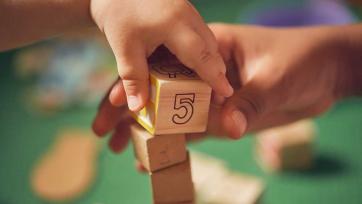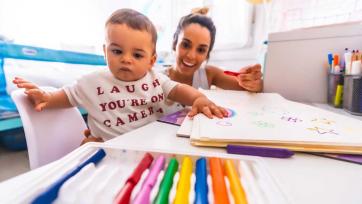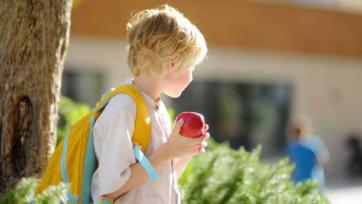Children are born with the innate capacity to instruct. The capacity to monitor the world is one of their best skills, as they learn from their surroundings. Parents must teach their preschool children in little increments. Children of this age must be taught forms in a way that makes sense without overwhelming them with knowledge.

Several objects and constructions are available for youngsters to play with to learn about fundamental form principles. The most important aspect is identifying toddler-appropriate activities and providing them with a learning experience they can later utilize.
Why is it essential for kids to learn about shapes?
The academic performance of children who are good at identifying shapes is enhanced. Because it is simpler to organize and arrange objects based on their form, they are also better at identifying what is in a picture. Therefore, youngsters must learn to identify shapes. This will aid youngsters in gaining a deeper understanding of their environment and how things fit together. Other important reasons for children to learn about shapes include:
Organizing visual information is a skill that children learn.
As children grow and learn more about the world around them, they must develop the ability to interpret what they see. Shapes are a great way to demonstrate the many components of an image and how they fit together. Whether looking at a picture of the earth, a plant, or a building seen on a stroll, shapes help youngsters interpret and organize what they see.
Help your kid identify numbers and letters.
Preschoolers can readily compare the sizes of objects since shapes appear in various sizes. When this happens, youngsters will comprehend the relationship between the lengths of letters and numbers. Your child will learn more about the letters and numbers due to this connection.
Teach your child signs.
It is possible to understand any sign or symbol based on its appearance. For example, a square-shaped stop sign directs traffic to a full stop. Even if you cannot see what's inside, the oval shape of the box shows that the product comes in oval packaging.
Children may learn to recognize unique symbols and signs by participating in various activities using shapes throughout time. During learning to read and print letters and numbers, shape-based activities will also help children understand how numbers and letters appear and what they represent.
Their capacity for problem-solving might be enhanced.
You can help your young children develop problem-solving abilities by encouraging them to explore their environment. Identifying and classifying distinct items is a crucial component of this. It teaches youngsters that they may discover answers by paying closer attention to what they see and how things function.
Concepts in Mathematics
Even though most preschoolers do not study arithmetic in school, a basic understanding of shapes and how to arrange them might help them learn about numbers. Additionally, understanding shapes may help children do better on arithmetic tests and comprehend concepts such as geometric patterns. As a consequence, children's mathematical abilities will increase.
Various strategies for educating kids about forms
Educating Shapes Using Imaginets
Imagine may help your child improve their fine motor skills and visual reasoning. There are no limits to what your child may do via imagination. You may educate your child to construct whatever shape you like. It is fun to do with your child, and the supplies are fun for kids to use. To learn more about this endeavor, please visit Gift of Curiosity.
Constructing a Shape
Your kid will use cotton swabs, tape, thread, and colored paper to make different forms during this activity. Write or draw an image on colored paper to begin. Using your resources, your child must then take a picture. Mom to 2 Posh Divas provides a comprehensive guide for doing this project.
SaltBox Explorations
Something special that your youngster would surely like. Create your saltbox and print out sheets of figures and shapes to get started. Once the adhesive has dried, put one piece of paper in the saltbox and cover all the images with salt. Next, teach your kid to use the brush on the salt and describe her findings. Provide your youngster some assistance by describing the shapes.
Using Geoboards to Teach Shapes
Geoboard is a great tool for teaching youngsters about fundamental and regular shapes. Tell your children to draw a shape on the effects, using a rubber band if possible. Don't forget to describe how the shapes function in actuality.
For instance, if your kid makes a triangle, you may explain it by tying it to a real-world event. Consequently, a triangle has three straight sides. Both the ice cream cone and the Egyptian pyramid are triangular.
Two-sided puzzles with shapes
Puzzles are a fantastic tool for teaching your child about shapes. Start by printing these free 2-part form puzzles from Teach My Toddlers. Place at least three shapes simultaneously on the table. Each form consists of two components, so you will have six.
Spread out the pieces and let your child choose a form. Then urge him to find the corresponding parts. Permit your child to assemble the puzzle pieces into the desired shape. Starting with basic shapes like squares, circles, triangles, and rectangles.
Create Hunt
This simple indoor activity takes just a few supplies for your child. You may need a printed chart, which can be obtained for free at Simple Play Ideas. You take your child into a room and have him count and record the number of shapes he finds on the chart. Your youngster will be pleased to learn that his room is filled with objects of various forms.
Creating playdough forms
Create Play-Doh figures for your child. It is a fantastic method for learning about the function of traditional forms. Ask them questions as they make shapes to determine what they've learned and to help them realize whatever they don't get.
The Form Sorter from Tupperware
This colorful Shape Sorter will teach your child how to arrange shapes in the proper order and what each shape represents. This toy will also help your youngster get familiar with intricate forms such as ovals, pentagons, trapezoids, and hexagons. It is recognized as the most beneficial math practice for children's growth and learning.
Teaching Flashcards for Shape
If utilized correctly, flashcards may aid in learning while also being enjoyable. The easiest way to use Shape Flashcards is to go through them quickly. A concise explanation activates the faster portion of your child's brain, enabling them to comprehend the subject more rapidly. Flashcards are a fantastic tool for teaching and reviewing shapes.
Magical Forms That Vanish
It enhances not only children's understanding of shapes but also their fine motor skills. It is entertaining, clear, and unique. Your child will need coffee filters, a glass pipette, a water cup, and a tray for this activity. Draw designs on a coffee filter and encourage your child to locate them using a disposable pipette and water.
There are various straightforward methods to teach your children about shapes. With their guidance, you may teach your child to identify shapes, and these exercises will help him learn the essential principles behind these forms. Additionally, it may be a wonderful way for couples to spend time together.








